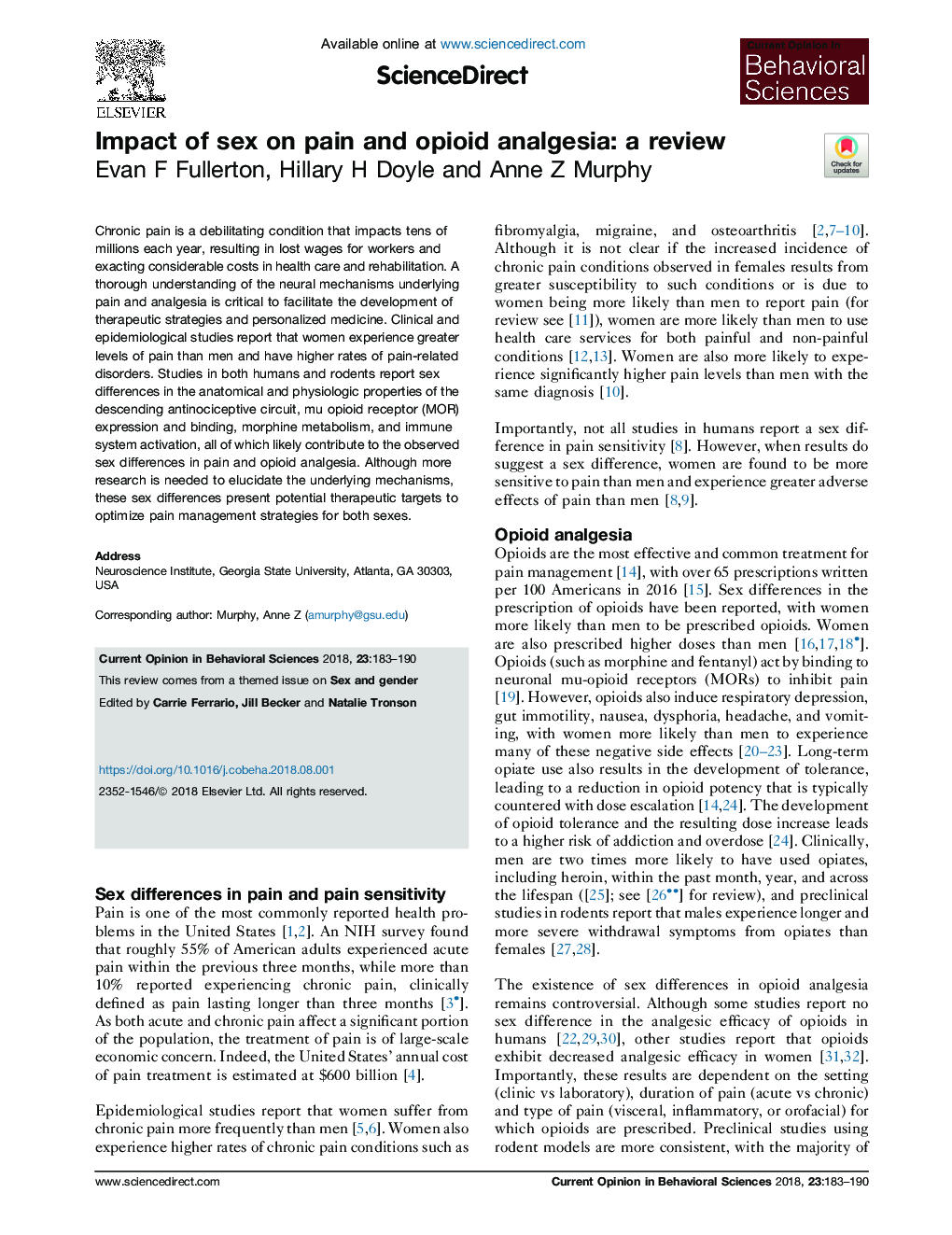| Article ID | Journal | Published Year | Pages | File Type |
|---|---|---|---|---|
| 10106863 | Current Opinion in Behavioral Sciences | 2018 | 8 Pages |
Abstract
Chronic pain is a debilitating condition that impacts tens of millions each year, resulting in lost wages for workers and exacting considerable costs in health care and rehabilitation. A thorough understanding of the neural mechanisms underlying pain and analgesia is critical to facilitate the development of therapeutic strategies and personalized medicine. Clinical and epidemiological studies report that women experience greater levels of pain than men and have higher rates of pain-related disorders. Studies in both humans and rodents report sex differences in the anatomical and physiologic properties of the descending antinociceptive circuit, mu opioid receptor (MOR) expression and binding, morphine metabolism, and immune system activation, all of which likely contribute to the observed sex differences in pain and opioid analgesia. Although more research is needed to elucidate the underlying mechanisms, these sex differences present potential therapeutic targets to optimize pain management strategies for both sexes.
Related Topics
Life Sciences
Neuroscience
Behavioral Neuroscience
Authors
Evan F Fullerton, Hillary H Doyle, Anne Z Murphy,
